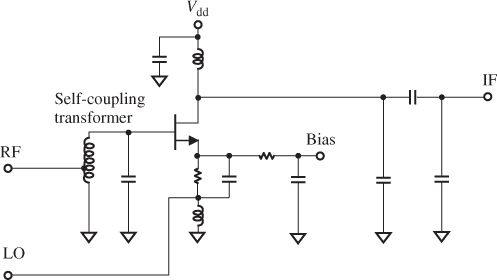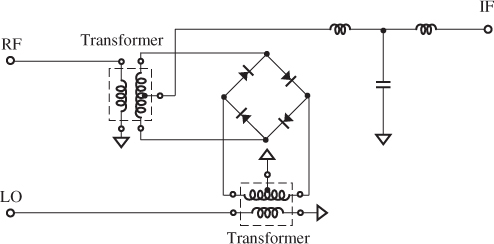Chapter 18
Mixer
18.1 Introduction
There are two kinds of mixers used to convert a signal from an RF to an IF in a communication system, that is, the active mixer and the passive mixer. Both have been developed and applied for several decades, and either can be used in a communication system in the frequency range of VHF, UHF, and GHz. However, in the microwave frequency range, it is more realistic to apply the passive mixer in a communication system.
Figures 18.1 and 18.2 show two typical active and passive mixers, respectively. The main device applied to an active mixer is the MOSFET (metal–oxide–semiconductor field-effect transistor) or bipolar transistor, whereas the main device applied to a passive mixer is a matched quad-diode.
Figure 18.1 A typical MOSFET active mixer.

Figure 18.2 A typical quad-diodes passive mixer.

The active mixer shown in Figure 18.1 is quite simple. It contains only one MOSFET. The RF signal is fed to a self-coupling transformer and then goes to the gate of the MOSFET. The self-coupling transformer or, say, an inductor with central tape, functions as an impedance matching part because the input impedance at the gate of the MOSFET is usually quite high. The LO injection is fed to the source of the MOSFET. At the drain of the MOSFET, an inductor and three ...
Get RF Circuit Design, 2nd Edition now with the O’Reilly learning platform.
O’Reilly members experience books, live events, courses curated by job role, and more from O’Reilly and nearly 200 top publishers.

